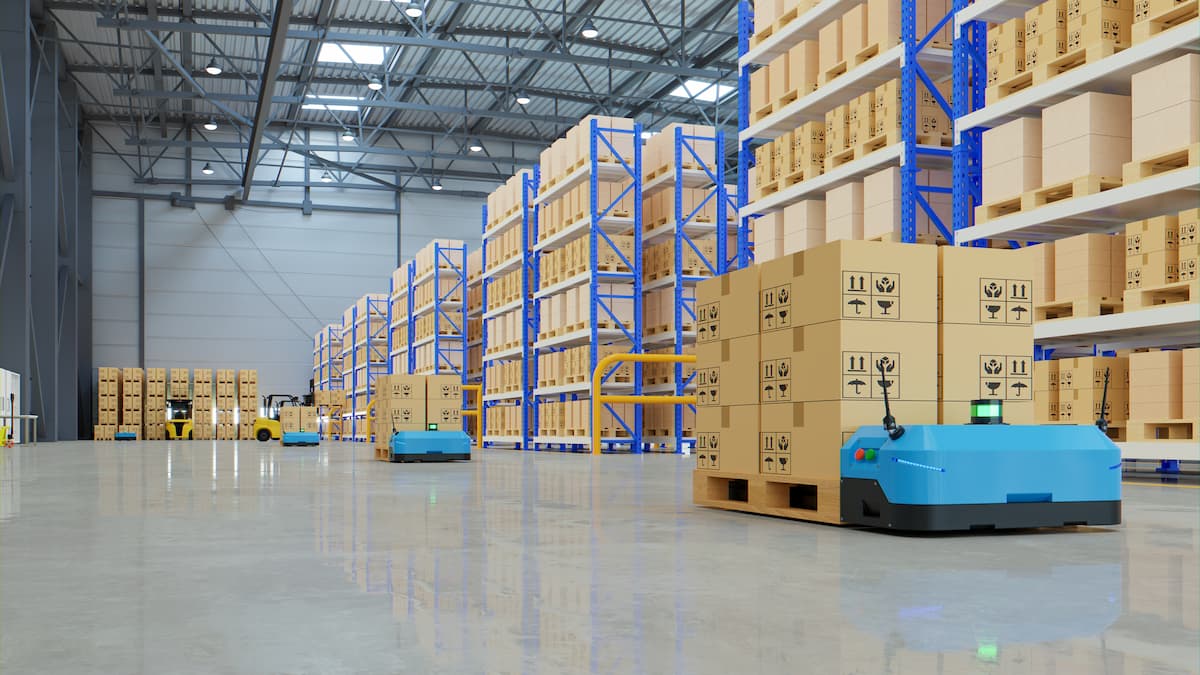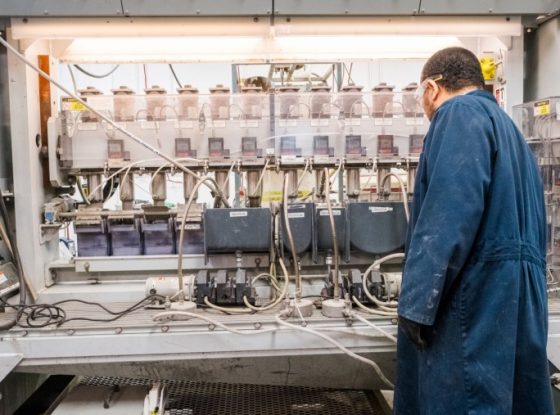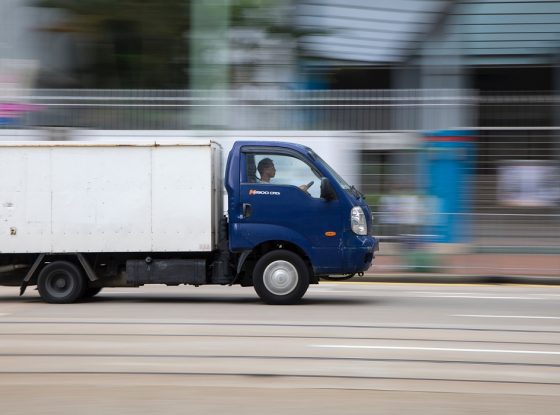New technologies at the service of industry and warehouses for better logistics management

Large logistics companies have long used ERP systems to manage travel and their logistics management, but the advent of new technologies, such as IoT, are sure to change that. In the era of Supply Chain 4.0, the Internet of Things helps collect, analyze and use data to improve performance, service levels and customer experience. This technology enables logistics companies to provide unique and connected solutions to their customers. In this article, we will take a look at the new technologies at the service of industry and warehouses to enable better logistics management.
Artificial intelligence for better logistics management
Artificial intelligence can help logistics companies better predict customer demand and avoid logistics problems. UPS is already using artificial intelligence to predict holiday shipping requests. The company has found that AI is particularly effective at predicting last-minute spikes in demand. This allows UPS to take action in advance to meet peak demand and avoid unnecessary delays.
AI can support dock management, directing trucks to the nearest available parking space. It can also help with parking lot security, leveraging existing surveillance cameras. Using AI in transportation logistics can also reduce costs and improve data accuracy. Companies can automate tasks such as package pickup and inventory management. They can even use computer vision to optimize parking spaces in ports by calculating the space between vehicles.

Source : synox.io
AI is revolutionizing the logistics industry, making it more efficient and profitable. Through predictive analytics, AI can predict demand and optimize fleets. With this technology, companies can reduce the total number of vehicles needed for transportation, direct them to where the demand is expected and save on operational expenses.
Increased intelligence through AI-related technologies
The logistics sector is facing several challenges. One is the lack of clean data, which makes it difficult to determine efficiencies. Fortunately, AI-powered technologies can help logistics providers solve this problem. By automating processes and generating data from multiple sources, AI can narrow down carrier options in seconds.
Machine learning, computer vision and natural language processing are the technologies that transform data into knowledge. With these technologies, data can be aggregated to reveal meaningful patterns. These patterns can then be used to create predictive models. With these technologies, companies can avoid inaccuracies and increase the efficiency of their operations. Another way AI can help logistics companies improve their operations is by providing intelligent alerts.
In addition, the data analysis performed by the artificial intelligence system improves the identification of problems and processes.
This technology can spot anomalies in the supply chain and make decisions based on that information. It can also identify orders and shipments that have not been properly routed.
In addition, it can automatically handle customer-related exceptions, reducing the need for human intervention in the supply chain.
Another advantage of AI is its ability to process thousands of parameters in real time. This capability allows AI algorithms to dynamically accelerate multiple route plans. This means that logistics companies can make more informed decisions about optimal routes and keep costs within budget. Using AI to facilitate these processes will allow logistics companies to better serve their customers and make their operations more efficient. It will also be useful in supply chain optimization.
The contribution of robotics
At a time when the logistics industry continues to suffer from a labor shortage, the use of robotic technology could make a big difference. The robots can handle a wide range of tedious and repetitive tasks and are capable of analyzing a large number of data points. They can even work in hazardous environments, such as chemical or dangerous goods plants.

Source : synox.io
Logistics operations often involve boring and repetitive tasks, which humans often get bored doing for long periods of time. In the long run, this can be detrimental to human performance and result in inefficiency. An example of such a task is moving boxes from one place to another on a pallet. Although this task is essential to the logistics process, human workers often get bored with it, which reduces their productivity.
As autonomous mobile robots become more sophisticated, they can help companies automate processes such as order picking and material delivery. They can be more flexible than conveyor systems, allowing human employees to focus on higher value-added tasks. For years, companies have been trying to find new ways to reduce costs while improving performance, and robotics has proven to be an excellent tool in this regard.
As autonomous mobile robots become more sophisticated, they can help companies automate processes such as order picking and material delivery. They can be more flexible than conveyor systems, allowing human employees to focus on higher value-added tasks. For years, companies have been trying to find new ways to reduce costs while improving performance, and robotics has proven to be an excellent tool in this regard.
Digital twins for logistics
Digital twins help logistics companies understand the location and movement of their fleets. They can also provide critical alerts to drivers, such as changes in traffic patterns, weather conditions and even accidents or fires. With real-time data, the digital twins can also alert logistics managers to mechanical problems and other maintenance needs. This data can be used to optimize the logistics network.
Digital twins are also used by companies in the energy sector. BP, for example, has a global downstream operation that processes 1.7 million barrels of crude oil each day. It uses AVEVA’s unified supply chain to analyze risks and economic factors and determine optimal responses. In this way, it can better align maintenance plans with market demand.
The use of digital twins also helps companies meet customer needs. For example, they can better meet customer demands for sustainable products. By using digital twins, companies can make better transportation decisions by reducing time and pollution. They can even optimize route planning, for example by reducing environmental pollution and time spent on the road.
Another advantage of digital twins is the ability to monitor the physical condition of warehouses. For example, they can detect when stocks have been moved and how often they have been moved. This information can help improve warehouse layout and increase worker productivity.
Driverless trucks: what future?
The arrival of driverless trucks could transform the logistics sector. A fleet of driverless trucks could help companies improve customer service, increase efficiency and reduce costs. Several startups already offer on-demand logistics services. Many of them use the “pay as you use” model, which charges customers based on vehicle usage. However, this model is limited by the needs of human drivers.
Eventually, that could change as autonomous trucks move closer to market availability. The logistics sector is undergoing many changes. Emerging technologies, market changes and new legislation are creating new challenges for the industry.

While these technologies can be beneficial to the sector, the logistics industry must be prepared for them. Companies must ensure they are fully prepared for disruption by considering these five trends and the implications of each.
While these autonomous trucks can reduce driving time, the technology is not yet completely foolproof. There is a risk of hacking, which could lead to fatal accidents. A hacker could reprogram a truck to steal its cargo or disrupt its brakes and acceleration. Furthermore, the technology may not be able to make moral decisions.
For example, it could accidentally hit an animal in front of it, or swerve to avoid a collision with another vehicle.
Drones and the example of Amazon
Drones are a rapidly growing technology in the logistics sector. These unmanned aerial vehicles are designed to reduce transportation costs and speed up operations. They can be used to monitor inventory, perform inspections and load and unload large cargo vessels. Drones can even inspect incoming vessels to reduce risk and increase efficiency.
In the logistics industry, the first mile is the most difficult and inefficient part. It can represent up to 28% of the total cost of freight transportation. In addition, the logistics system is very complicated and difficult to optimize. Most urban areas are facing increased traffic congestion, which makes shipping goods more expensive. Drones can significantly reduce these costs and speed up deliveries. For example, Amazon’s Prime Air drone is designed to make same-day deliveries to customers.
As these devices continue to improve, more warehouses are beginning to use drones to make deliveries. This is a great way to improve efficiency and reduce shipping costs. In addition to speeding up deliveries, these machines can also reduce costs by eliminating truck distribution. This could also help to stimulate e-commerce. The drones could even pick up the orders and direct them to their destination. This would significantly improve service delivery and meet consumer needs.
The uses of augmented reality
Augmented reality has many uses in the logistics sector.
For example, a truck driver can use an AR device to identify and track a box, saving time and effort.
The device can also provide other relevant information, such as the weight of the box and the delivery address. In addition, it could help drivers avoid dropping and damaging goods.
The logistics industry is a complex field. It requires complex skills that can be difficult to master. With AR devices, drivers can quickly identify problems and find solutions. This can reduce costly errors and improve productivity. AR technology is also used in assembly and repair services. This can be especially useful when the assembly process is complicated and errors are costly.
To conclude?
IoT, AI, robots, drones, augmented reality… new technologies have not finished making news in the logistics sector and other innovations could emerge in the coming years to improve logistics management and supply chain management as a whole.
Source : synox.io



